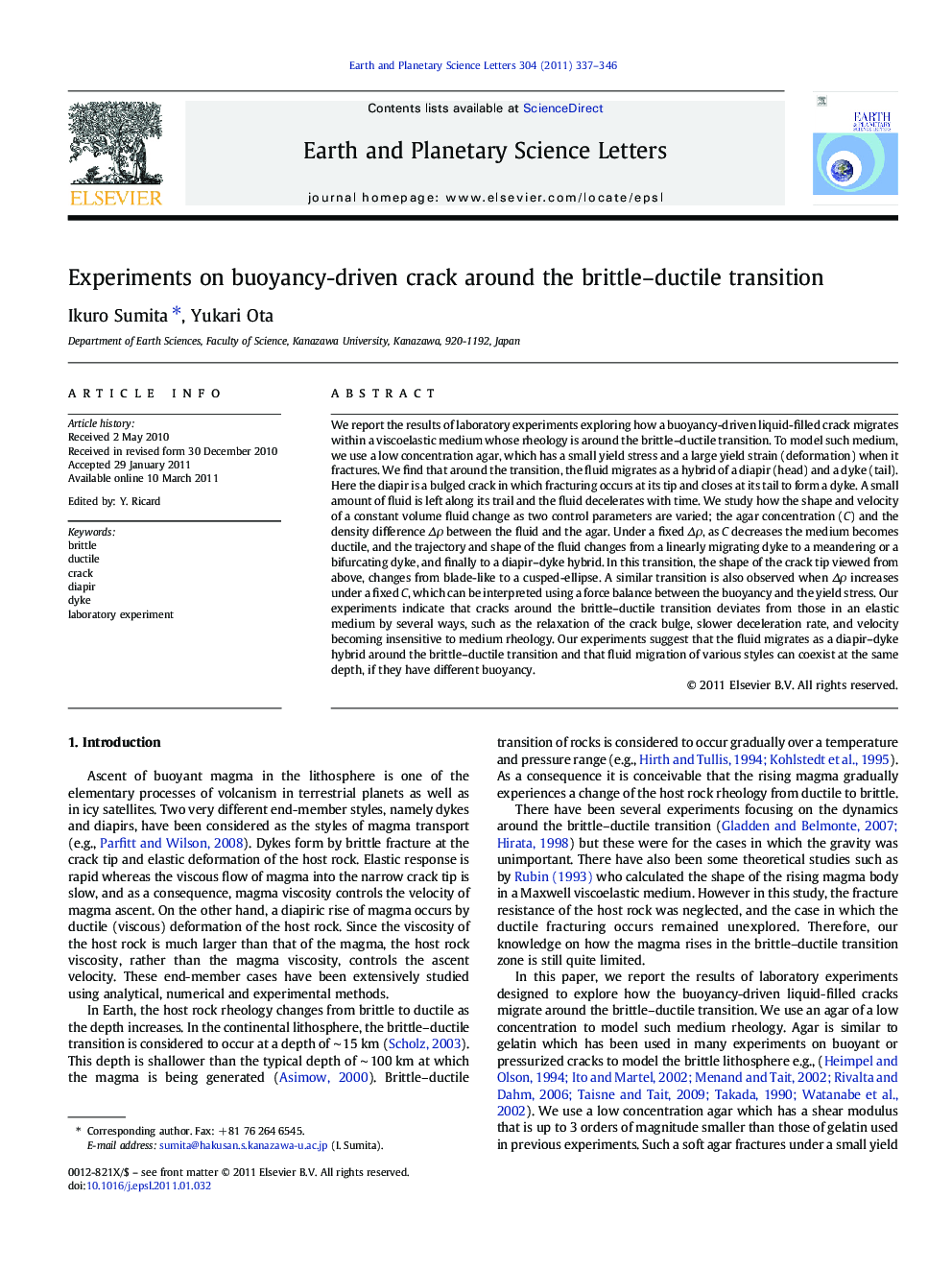| کد مقاله | کد نشریه | سال انتشار | مقاله انگلیسی | نسخه تمام متن |
|---|---|---|---|---|
| 4678120 | 1634831 | 2011 | 10 صفحه PDF | دانلود رایگان |

We report the results of laboratory experiments exploring how a buoyancy-driven liquid-filled crack migrates within a viscoelastic medium whose rheology is around the brittle–ductile transition. To model such medium, we use a low concentration agar, which has a small yield stress and a large yield strain (deformation) when it fractures. We find that around the transition, the fluid migrates as a hybrid of a diapir (head) and a dyke (tail). Here the diapir is a bulged crack in which fracturing occurs at its tip and closes at its tail to form a dyke. A small amount of fluid is left along its trail and the fluid decelerates with time. We study how the shape and velocity of a constant volume fluid change as two control parameters are varied; the agar concentration (C) and the density difference Δρ between the fluid and the agar. Under a fixed Δρ, as C decreases the medium becomes ductile, and the trajectory and shape of the fluid changes from a linearly migrating dyke to a meandering or a bifurcating dyke, and finally to a diapir–dyke hybrid. In this transition, the shape of the crack tip viewed from above, changes from blade-like to a cusped-ellipse. A similar transition is also observed when Δρ increases under a fixed C, which can be interpreted using a force balance between the buoyancy and the yield stress. Our experiments indicate that cracks around the brittle–ductile transition deviates from those in an elastic medium by several ways, such as the relaxation of the crack bulge, slower deceleration rate, and velocity becoming insensitive to medium rheology. Our experiments suggest that the fluid migrates as a diapir–dyke hybrid around the brittle–ductile transition and that fluid migration of various styles can coexist at the same depth, if they have different buoyancy.
Research Highlights
► Crack properties are studied as medium becomes softer and buoyancy becomes larger.
► In a soft medium, crack has a diapiric head which closes at its trail to form a dyke.
► Crack transits from a dyke, meandering or bifurcating dyke, to a diapir -dyke hybrid.
► In this transition, deceleration decreases and descent distance increases.
Journal: Earth and Planetary Science Letters - Volume 304, Issues 3–4, 15 April 2011, Pages 337–346